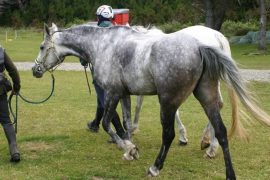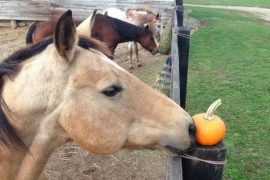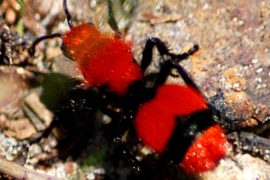Plant tissue culture or in vitro culture (also called micropropagation) is a method of plant propagation under “in vitro” conditions developed in the 1960s. In vitro is borrowed from Latin and means something like in the glass. A distinction is made between meristem cultures and organ cultures.
In meristem cultures, the cells from the plant’s meristem are used. A meristem is a so-called formation tissue, which consists of undifferentiated cells. There are certain parallels to animal stem cells, which will not be explained in detail here.
Meristems are located on the shoot tips (shoot apical meristems), side shoots (subcutal meristems), and root tips (root apical meristems). In contrast to the permanent tissue (parenchyma), the meristem consists of cells that are still capable of mitotic division. Here there is a unique ability of plant cells, the so-called totipotency. This means that a complete organism can be formed from individual cells of the meristem tissue. In addition to the meristem cultures, there are also so-called organ cultures. Here, not only individual cells are removed from mother plants, but complete, small plant parts z. B. side shoots, shoot tips, single nodes, seeds, or leaves used as starting material.
Benefits of Plant Tissue Culture
First and foremost, plant tissue culture guarantees the cultivation of healthy, virus-free young plants because the meristems, as the youngest plant tissue, are not yet infected by viruses. This is important in the so-called phytosanitation of plant varieties that have lost their vitality due to a virus attack and thus enables them to be kept virus-free. The plants propagated in these processes are genetically identical (true to the variety) to the mother plant and in this way, many new plants can be bred from only a small amount of starting material. This is particularly important when preserving rare or old plant varieties that are difficult to propagate using conventional methods.
Plant tissue culture is therefore mainly used to build up large stocks of economically important useful and ornamental plants. Since the plants are grown under sterile conditions, they are largely free of pathogens and pests and can be exported without any problems.
So how does this in vitro culture take place?
First, so-called primary explants are removed from selected mother plants. These are tiny pieces of tissue from which complete plants are later developed.
The second step is disinfection. Any externally adhering germs are killed. The explants are then placed on an appropriate nutrient medium in a sterile environment.
The stocks are checked regularly and sorted out if necessary.
The plants resulting from these primary explants are further placed on a solid nutrient medium and the plants continue to develop there.
Composition of the cultural medium
Although the nutrient medium can be specially tailored to the plant species, there are basic common components for all nutrient media that are essential for plant growth. These components include macro and micronutrients, vitamins, hormones, etc.
Macronutrients include nitrogen (N), phosphorus ℗, potassium (K), magnesium (Mg), calcium (Ca), and sulfur (S).
Micronutrients include Manganese (Mn), Boron (B), Zinc (Zn), Molybdenum (Mo), Copper (Cu), Cobalt (Co), Iodine (I), and Iron (Fe).
In addition, the following vitamins are added: nicotinic acid, pyridoxine, thiamine, biotin, folic acid, and glycine.
Phytohormones are also an important part of the nutrient medium. With the appropriate composition, the growth processes in the tissue cultures can be controlled and specifically promoted, for example, root formation. The concentration and the relationship between the hormones are also important. The most important phytohormones include auxins (root hormones), which stimulate root formation, and cytokinins (growth hormones), which promote branching. The composition of all these substances can be used to steer organogenesis in the desired direction. Giberelin and abscisic acid are also sometimes used because they have a positive influence on the growth of some plant species. The nutrient medium also consists of sugar, water, and agar, which is used as a gelling agent.
In vitro plants in aquaristics
Plants from tissue culture are becoming increasingly popular among aquarists and especially plant dealers. The range of offered meristem boxes with aquarium plants is getting wider, which is not without reason.
In vitro plants have several advantages compared to normally propagated, potted plants.
- While potted or bundled goods may be infested with snails, in vitro plants are guaranteed snail-free.
- No parasites, algae, or germs are transmitted either. The use of such sterile plants is particularly recommended for aquariums with sensitive invertebrates.
- Another advantage is that meristem plants do not contain any residues of pesticides or algaecides, which would be very harmful to shrimp or crabs.
- Although the meristem plant pots are smaller than the standard pots, they contain many more individual plants.
- These grow quickly because the roots are healthy and fully developed in the nutrient medium.
- Compared to the emersed plants, in vitro plants do not lose their leaves after being planted underwater.
- Another advantage (especially for us plant traders;-)) is that these plants are easy to transport and do not have to be planted immediately upon receipt. With sufficient light, at room temperature, and in an unopened cup, the quality is retained for several weeks.
- Almost all potted plants grow in Rockwool. When transplanting, it is sometimes unavoidable to damage or trim the roots. These problems do not exist with in vitro plants. With careful handling, root damage can be largely avoided.
In order to place in vitro plants in the aquarium, the following steps should be followed:
- Remove the plants from the cup and carefully wash out the nutrient substrate under running water. The easiest way to do this is to place the plants in a container of aquarium water for a period of time, around 1 hour, and then gently wash off the softened nutrient jelly.
- The clean plants can now be divided into 6-8 parts with scissors. Depending on the species, you can also carefully divide the plants into several portions with your fingers.
- Carefully plant the individual sections in the aquarium soil. Long tweezers should be used for this and the plants should not be planted too densely in accordance with their final size in the substrate.





